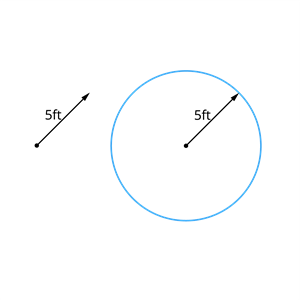PDF chapter test TRY NOW
Postulate:
It is accepted by everyone without proof but specific to geometry.
Axiom:
It is also accepted by everyone without proof and applicable in all the fields.
Euclid’s axioms
1. Things which are equal to the same thing are equal to one another.
2. If equals are added to equals, the wholes are equal.
3. If equals are subtracted from equals, the remainders are equal.
4. Things which coincide with one another are equal to one another.
5. The whole is greater than the part.
6. Things which are double of the same things are equal to one another.
7. Things which are halves of the same things are equal to one another.
Euclid's postulates
Postulate 1: A straight line may be drawn from any one point to any other point.
It explains that there can be at least one straight line passes through two distinct points. It doesn't say that there cannot be more than one such line. This can be written in the form of an axiom, as mentioned below.
Axiom 1: Given two distinct points, there is a unique line that passes through them.

Postulate 2: A terminated line can be produced indefinitely.
A line segment is called as a terminated line by Euclid. Thus, the line segment can be extended in both sides to form a line.

Postulate 3: A circle can be drawn with any centre and any radius.

Postulate 4: All right angles are equal to one another.

The postulates from 1 to 4 are called "self-evident truths".
Postulate 5: If a straight line falling on two straight lines makes the interior angles on the same side of it taken together less than two right angles, then the two straight lines, if produced indefinitely, meet on that side on which the sum of angles is less than two right angles.

The line AB in falls on lines PQ and SR such that the sum of the interior angles 1 and 2 is less than 180° on the left side of AB. Therefore, the lines PQ and SR will eventually intersect on the left side of AB.
Important!
The statements that can be proved are called propositions or theorems.
Reference:
National Council of Educational Research and Training (2006). Mathematics. Chapter-5 Introduction to Euclid's Geometry(pp. 78-88). Published at the Publication Division by the Secretary, National Council of Educational Research and Training, Sri Aurobindo Marg, New Delhi.
